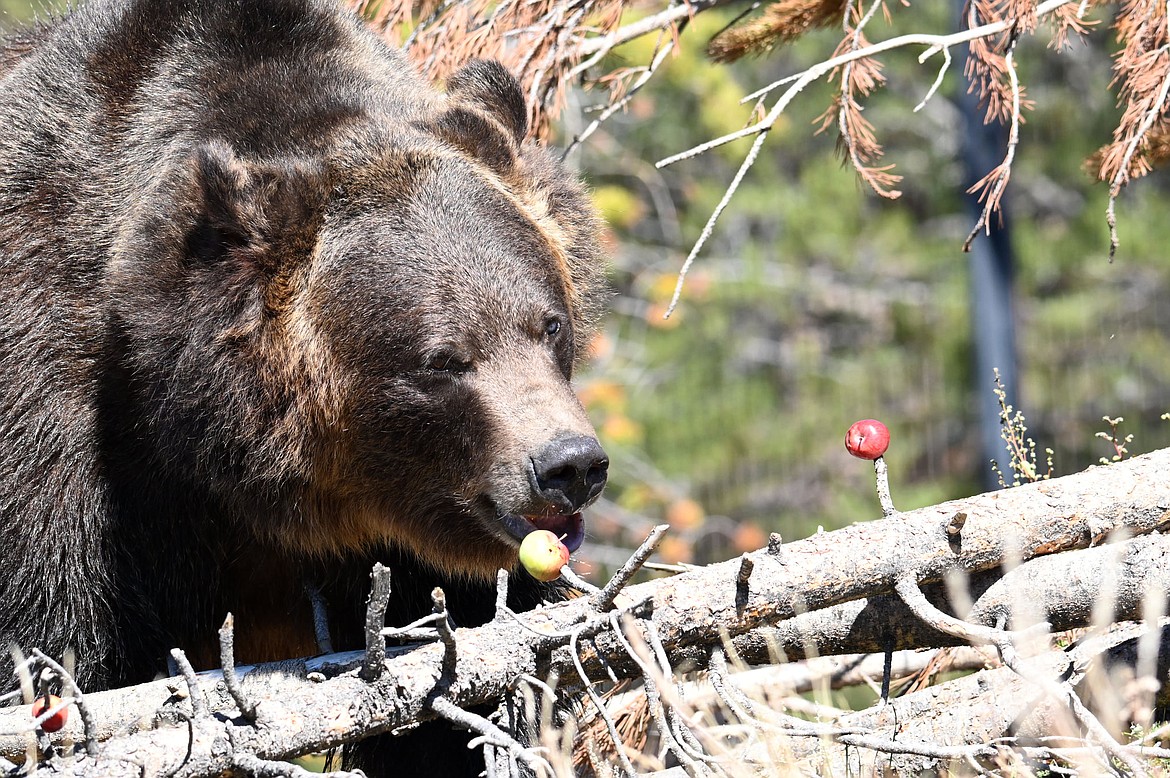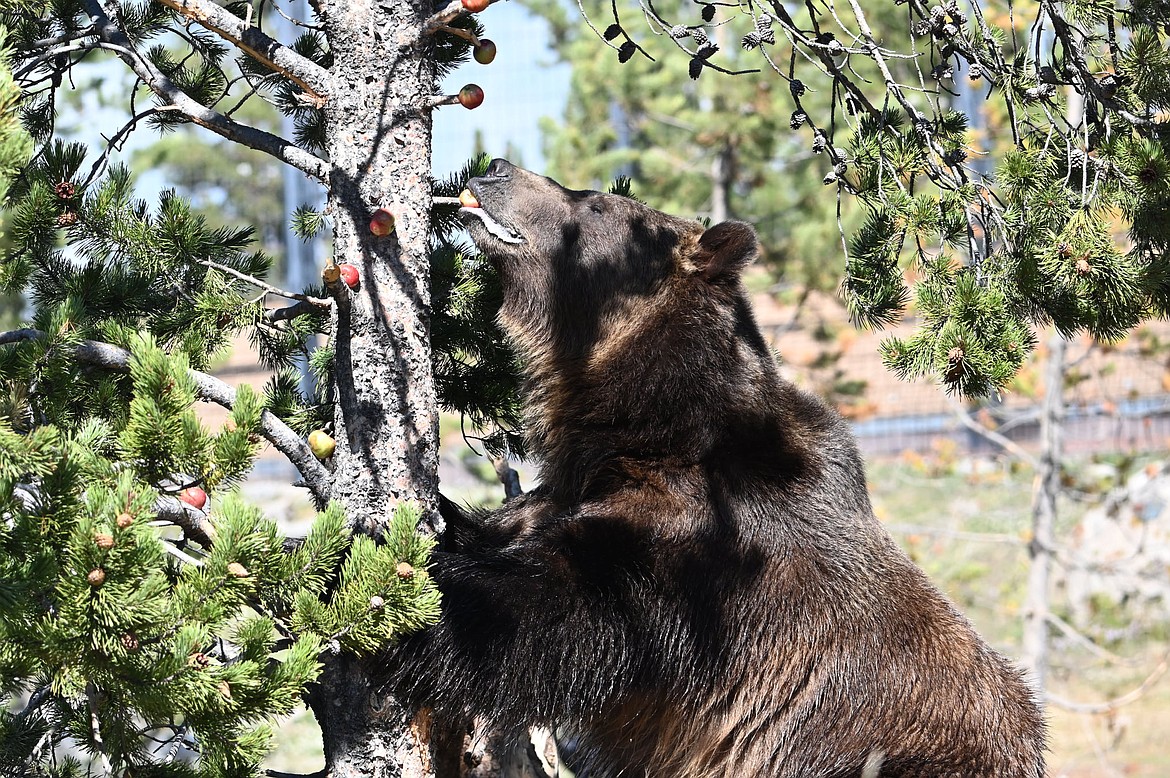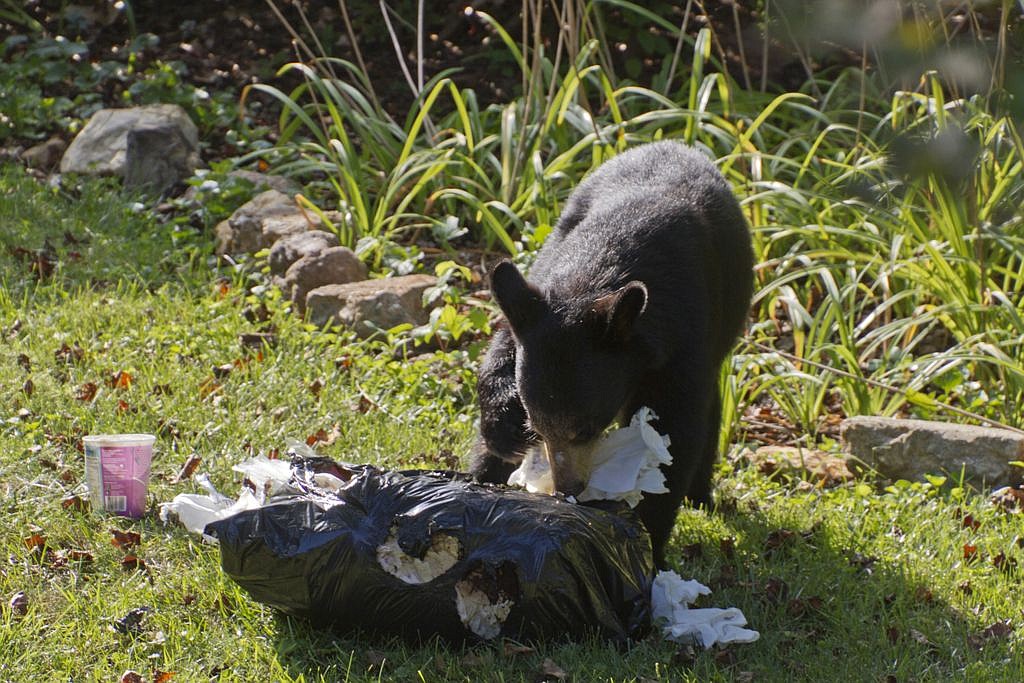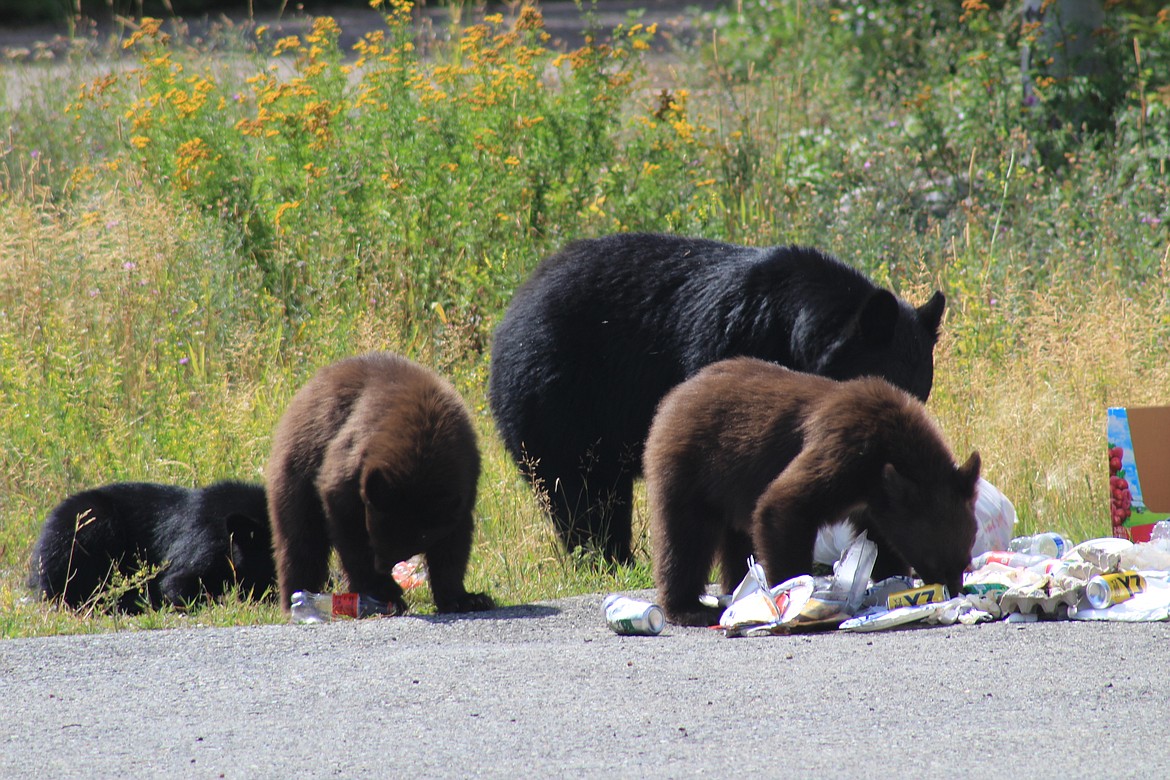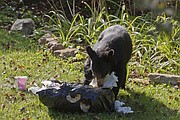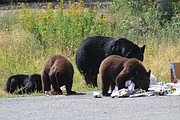Low hanging fruit : Keeping bears out of yards during their hungriest season
Bears are particularly active right now in Bigfork as they prepare for their denning season after a tough, hot summer. That’s according to Region One Information and Education Manager for Montana Fish, Wildlife and Parks Dillon Tabish. He said bears will start to seek other food sources besides their usual roots and berries in the fall as they enter hyperphagia- an increase in feeding activity to biologically prepare them for hibernation all winter.
“Right now they are looking for every food on the landscape. That includes garbage, barbecue, dog food, you name it.” Tabish said. “But specifically in this valley, we are having a lot of calls and reports of bears getting into garbage that has been left out,”
Tabish said there is a state law prohibiting the intentional feeding of wildlife, but it’s difficult for authorities to determine what is and isn't an intentional violation. He said FWP depends on education to help residents know how to best deter bear visits. Tabish said their best tip is to make sure you keep your trash put up until it’s time to take it out.
“If your trash gets picked up on Thursday, we don’t recommend you put your trash out until Thursday morning. So, that’s a really easy step folks can take to avoid having a bear come onto their property and create quite a mess,” he said.
Tabish said bears have a sense of smell 100 times stronger than a human’s. He said because of this, they will seek out anything with a scent, even from over two miles away. Tabish said this where the next biggest catalyst in human and bear conflict in the Flathead comes into play, especially in the fall.
“Fruit trees: if you have that fruit in your yard and it starts to spoil a little bit, you can smell it,” Tabish said. “So, you figure if a human can smell it, a bear definitely can.”
Tina Zenzola is a board member with conservation nonprofit Swan Valley Connections and started the group Bear-Friendly Ferndale this year with some of her neighbors. She said Ferndale experiences a lot of bear activity and she and her neighbors saw a need to improve safety measures in their community. She said the group is up to about 20 members and focuses on educating community members and recently has been volunteering to pick fruit.
“Ferndale- it is just full of fruit trees. It’s a traditional farming community and people used to can the fruit...it’s wonderful but a lot of them are getting raided by the bears, and a lot of them are close to people’s homes,” Zenzola said. “It’s really a bad recipe for the bears.”
Swan Valley Bear Resources is a program offered by Swan Valley Connections in partnership with Montana FWP, the U.S. Forest Service and the U.S. Fish and Wildlife Service (Bear Friendly Ferndale falls under this program.) The program offers assistance in bear-proofing backyards. Zenzola said they offer free consultations and can financially aid and physically aid in setting up things like electric fences and getting people bear-proof trash cans.
Zenzola said she and her neighbors volunteered to pick fruit through a Montana FWP Facebook group called “Flathead Fruit Gleaning,” where residents can offer up their fruit to anyone who is willing to come pick it.
Tabish said it’s one way the organization is hoping to educate people about bear safety and also give people the opportunity to get fresh fruit. Others get to enjoy the not-so-fresh fruit; Tabish said they donated a horse trailer full of fruit to the Grizzly & Wolf Discovery Center in West Yellowstone, giving rescued bears at their sanctuary a chance to eat some delicious apples.
Zenzola said donating the fruit felt like saying sorry to bears who were food conditioned from getting into human garbage, especially since a couple of the bears at the sanctuary were rescued from the Flathead Valley.
“I think whether you’re a new resident or an old resident here, there’s always things we maybe didn’t realize or that we’ve been doing forever, and there’s never been a problem but it just takes that one night when a grizzly comes in, and gets into something they’ve never gotten into before,” Zenzola said. “That’s what we find a lot, even with old-timers- people who are from here or have been here 20-30 years and maybe they’ve never had that experience. It’s kind of like wearing a seat belt, most of us have never been in a head-on collision but we wear one just in case something does happen.”
Those unfamiliar with bear country might believe that bears getting into trash is a messy inconvenience at best and a scary, unexpected encounter at worst, but Tabish said there’s an even bigger reason it’s important to keep bears away from human food.
“This is something we really try to avoid, is a bear becoming food conditioned, and that means if a bear keeps getting into human food sources like garbage, they essentially lose their natural foraging abilities. So, they quit going into the mountains and looking for natural food sources,” he said.
Tabish said these bears have made the association that humans lead to food, and bears who are too food conditioned unfortunately have to be euthanized.
“That’s why we want to hear about these issues early on so we can work with landowners to remove those food sources, and sometimes if we have to we’ll capture the bear and try to move it back into wild, but if a bear becomes really food conditioned there’s no going back,” Tabish said.
Tabish spoke about an incident this past summer in the North Fork Valley where FWP had to euthanize a grizzly bear sow and her three yearling cubs. He said the bears were so food conditioned they were breaking into cars and trailers. Bear No. 418, also known as Monica, had been a resident grizzly bear in the North Fork Valley for 17 years.
Tabish said he believes there’s been an uptick in reports about bears getting too close for comfort compared to fall of last year. He said he believes it might be due to their other food sources like berries suffering after a hot, dry summer followed immediately by a cold snap that killed off the crop earlier than usual. He said this is why they are seeking out food close to towns and neighborhoods, making it critical that people take steps to curtail bear encounters.
“These are pretty simple steps: keeping garbage put up and fruit trees secured or removed, they’re really simple steps people can take to avoid conflict, avoid public safety issues on the property, and also avoid us having to kill a bear,” Tabish said.
Anyone interested in getting guidance or assistance in bear-proofing their yards can contact FWP Grizzly Bear Management Specialist Tim Manley at 406-752-5501 or send an email to Swan Valley Connections Conservation Director Luke Lamar at luke@svconnections.org.
Bigfork Eagle editor Taylor Inman can be reached at 758-4433 or editor@bigforkeagle.com

